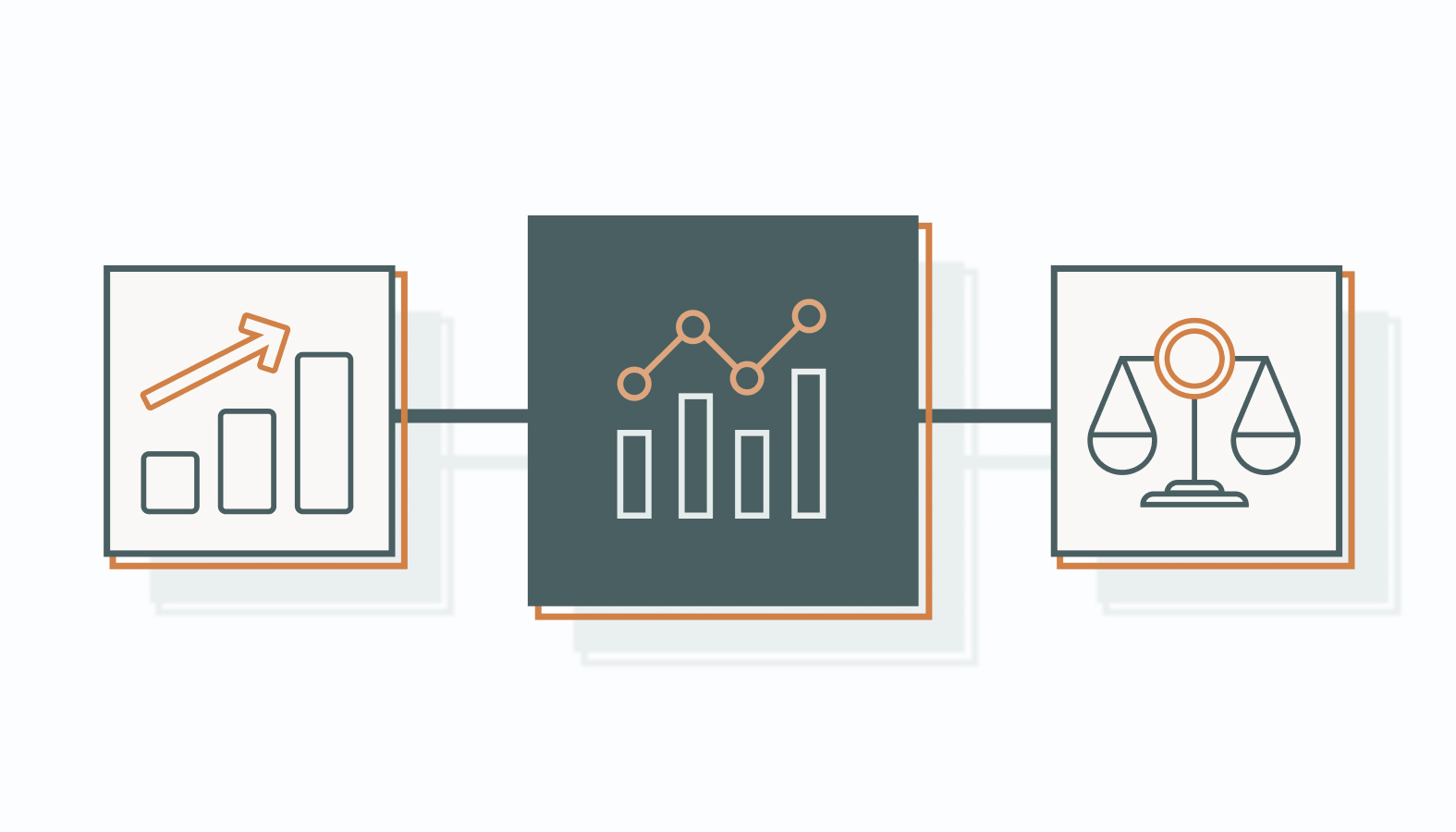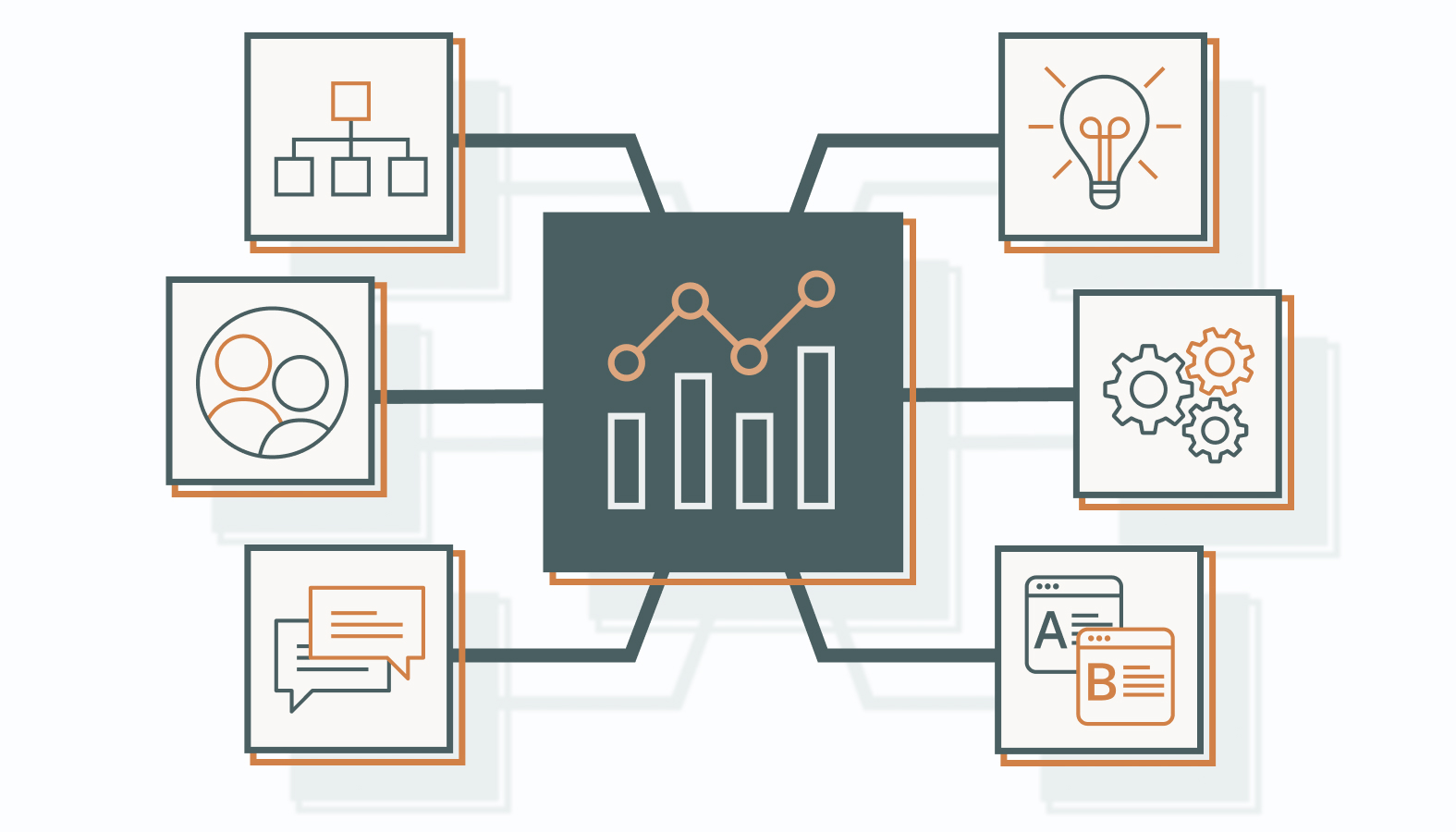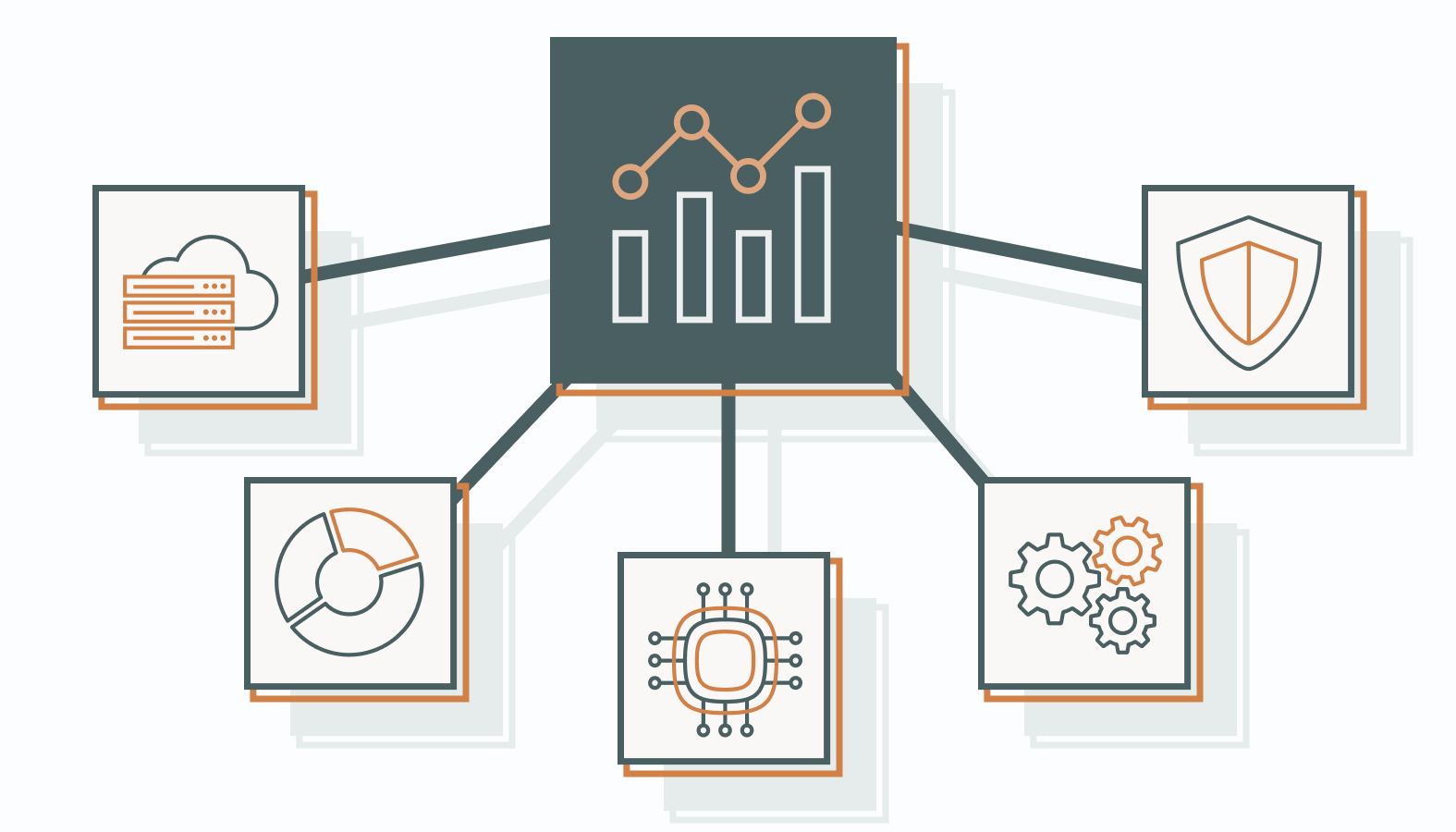The era of random marketing is over. Modern marketing is no longer about throwing stuff at the wall and hoping it sticks. Data now empowers marketers to make strategic decisions. The winners know that data isn’t just numbers on a spreadsheet — it’s the key ingredient for smarter decisions, laser-focused targeting, and ROI that actually means something.
But here’s the kicker: data-driven marketing can feel like a tangled mess of analytics dashboards, customer segmentation puzzles, and tech jargon overload. Even the best marketers can get lost in the noise.
That’s why we’re cutting through the chaos. This guide gives you a no-nonsense approach to making data work for you. From precision personalization to seamless multi-channel integration and predictive insights that keep you two steps ahead, we’ve got you covered.
Buckle up. Your marketing is about to go next level.
What Is Data-Driven Marketing (And Why It Matters)?
In today’s digital battleground, where consumer attention is more valuable than ever, data-driven marketing is a game-changer. The brands leading the pack aren’t guessing; they’re leveraging data to make strategic, informed decisions that maximize impact. Every campaign, every ad, every interaction is backed by intelligence.
At its core, data-driven marketing means using real insights to fine-tune every aspect of a marketing strategy. It eliminates guesswork, transforming raw data into targeted campaigns that drive engagement, build brand loyalty, and fuel revenue growth.
By harnessing data, businesses can anticipate customer needs, personalize experiences, and measure success with precision.
The Evolution of Data-Driven Marketing
Marketing has come a long way from gut instincts and broad demographic targeting.
Once upon a time, advertisers relied on census data and focus groups to shape their strategies. Then came the digital revolution, unlocking a goldmine of behavioral insights across social media, search engines, and e-commerce platforms.
Today, forward-thinking brands use AI, machine learning, and predictive analytics to turn vast amounts of data into actionable strategies. Every click, scroll, and purchase leaves behind a digital footprint, giving marketers the ability to deliver hyper-personalized experiences.
The shift from reactive to proactive marketing is in full swing. Brands no longer just respond to consumer behavior; they anticipate it. Whether it’s predictive product recommendations or automated multi-channel campaigns, data-driven marketing has become the foundation of modern business growth.
And as technology continues to evolve, so will the strategies that connect brands with their audiences in smarter, more meaningful ways.
Core Principles of Data-Driven Marketing
Mastering the basics of data-driven marketing is key to running successful campaigns.
Smart Data Collection
Quality data is the fuel that powers every successful marketing strategy.
The sharper your data, the smarter your decisions. Customer surveys, transaction records, and web analytics are just a few sources that provide insight into behaviors, preferences, and purchasing patterns.
But raw data alone doesn’t cut it. Context matters. Without the proper framing, numbers are just noise. Precision in collection and interpretation separates informed strategy from guesswork.
Deep Data Analysis
Raw data without analysis is like a puzzle without a picture to guide you. The real magic happens when you extract meaning from the numbers.
Statistical modeling, data mining, and machine learning turn scattered data points into a clear roadmap for decision-making. Trends emerge, customer behaviors become predictable, and hidden opportunities rise to the surface.
With the right approach, you’re not just reacting to the market. You’re anticipating its next move.
Strategic Data Application
Turning insights into action is where data earns its keep. Precision-driven campaigns take shape when marketers use data to connect with the right audience at the right time.
Personalized messaging, tailored offers, and content built around real customer behaviors transform engagement from guesswork into a science.
When executed correctly, marketing moves beyond relevance and delivers real impact, creating stronger connections and measurable results.
Robust Data Management
Data-driven marketing thrives on a foundation of precision, security, and seamless integration.
Managing data effectively means keeping it clean, organized, and accessible while ensuring airtight security and compliance. This involves safeguarding against breaches, maintaining accuracy, and syncing data across platforms to create a unified, actionable resource.
When businesses treat data like the strategic asset it is, they unlock smarter marketing, sharper decision-making, and a competitive edge that keeps them ahead of the curve.
Winning Strategies for Data-Driven Marketing
Customers expect fast, personalized experiences. The following data-driven strategies give businesses the edge to deliver precisely that:
1. Multi-Channel Data Integration: Create a 360° Customer View
Customers bounce between social media, emails, websites, and in-store visits, expecting a seamless experience at every turn. To meet those expectations, businesses need a unified view of customer interactions across all channels.
When data is scattered, opportunities slip through the cracks. When it is integrated, marketing becomes smarter, faster, and more effective.
Customer Data Platforms (CDPs) and APIs make this level of integration possible, ensuring every piece of data is connected and consistent. Strong data governance policies prevent chaos, while the right tools streamline the process.
A well-integrated system means marketers work with a complete, real-time picture of their audience, making personalized engagement a strategic advantage, not a guessing game.
2. Customer Segmentation: Target the Right Audience with Precision
Throwing the same message at everyone and hoping it sticks is a waste of time and budget. Customer segmentation turns that scattershot approach into a laser-focused strategy. By dividing customers into distinct groups based on behaviors, demographics, and psychographics, businesses can deliver marketing that speaks directly to each audience segment.
To refine segmentation and boost accuracy:
- Collect Detailed Data: Go beyond surface-level demographics. Track behaviors, preferences, purchase history, and engagement patterns.
- Analyze and Group: Use advanced analytics to identify trends and commonalities, ensuring each segment is based on real insights, not assumptions.
- Create Actionable Profiles: Build detailed customer personas that guide messaging, offers, and outreach strategies. The more precise the profile, the stronger the connection with the audience.
When segmentation is done right, marketing feels personal, engagement rises, and conversions follow. It is the difference between hoping for results and engineering them.
3. Personalization: Make Every Interaction Feel One-of-a-Kind
Customers expect more than generic marketing blasts. They want experiences that feel tailor-made for them. Personalization uses data-driven insights to craft messages, offers, and content that resonate on an individual level, strengthening engagement and building long-term loyalty.
Achieving personalization at scale requires smart technology and a strategic approach:
- Leverage AI and Machine Learning: Advanced algorithms analyze customer behaviors, preferences, and past interactions to predict what they want next.
- Use Dynamic Content: Personalized emails, website experiences, and ad placements shift in real time based on user data, ensuring relevance at every touchpoint.
- Optimize with Recommendation Engines: From product suggestions to curated content, these tools refine the customer journey by anticipating needs before customers even express them.
When personalization is done right, customers feel understood rather than targeted. That connection turns engagement into action and one-time buyers into lifelong brand advocates.
4. Predictive Analytics: Stay Ahead of Customer Needs
The best marketing isn’t reactive — it’s proactive. Predictive analytics harnesses statistical models and machine learning to forecast customer behaviors, market shifts, and emerging trends. By identifying what’s likely to happen next, businesses can fine-tune their strategies before the competition sees the curve ahead.
Here’s how predictive analytics drives smarter marketing:
- Churn Prevention: Spot early warning signs of disengagement and re-engage at-risk customers with targeted retention campaigns.
- Customer Lifetime Value (CLV) Forecasting: Identify high-value customers and tailor loyalty strategies to maximize long-term revenue.
- Intelligent Product Recommendations: Serve up personalized suggestions based on browsing habits, purchase history, and behavioral data.
The power of predictive analytics lies in its ability to turn raw data into a competitive advantage. When businesses shift from reacting to anticipating, they stay ahead of customer needs, improve efficiency, and create experiences that feel effortless and intuitive.
5. Marketing Automation: Maximize Impact with Minimal Effort
Smart marketing is about working smarter (not harder). Marketing automation tools take care of the heavy lifting, handling repetitive tasks like email sequences, social media scheduling, and lead nurturing so that teams can focus on strategy, creativity, and innovation.
The right automation platforms, such as HubSpot, Marketo, or Salesforce Pardot, offer powerful features such as:
- Workflow Automation: Set up seamless processes that trigger personalized interactions at the perfect moment.
- Lead Scoring: Identify high-potential prospects and prioritize outreach based on real engagement metrics.
- Cross-Channel Consistency: Keep messaging aligned across email, social media, and beyond, ensuring a unified brand experience.
Automation isn’t about replacing human ingenuity. It’s about amplifying it. When businesses automate the right tasks, they free up time for big-picture thinking, high-value interactions, and strategies that drive real results.
6. A/B Testing & Optimization: Constantly Improve Your Approach
A/B testing is the marketing world’s version of a controlled experiment. By testing two variations of a campaign element — whether it’s a headline, image, call-to-action, or email subject line — brands can pinpoint what truly resonates with their audience.
Success doesn’t happen by guesswork. It’s built through continuous testing and fine-tuning. Running controlled experiments helps marketers optimize engagement, conversion rates, and overall campaign performance. Key best practices include:
- Testing One Variable at a Time: Isolating a single element ensures clear, actionable insights.
- Analyzing Data, Not Just Metrics: Looking beyond clicks and opens to measure true impact on revenue and customer behavior.
- Iterating Based on Insights: Using test results to refine, improve, and scale winning strategies over time.
Marketing landscapes shift, customer preferences evolve, and competitors adapt. Brands that embrace A/B testing as an ongoing process (not a one-time tactic) stay ahead of the curve and continuously elevate their marketing impact.
The Best Tools & Technologies for Data-Driven Marketing
The right tech stack turns data into smarter marketing. These tools provide deeper insights, strengthen customer relationships, and keep businesses compliant with data protection regulations.
CRM & Data Integration
A strong CRM system keeps customer relationships running smoothly. It centralizes data, making every interaction more efficient and every message more personalized. Whether handling inquiries, tracking service history, or automating follow-ups, a CRM ensures no detail slips through the cracks.
Integrating data sources supercharges this process. By pulling insights from sales, social media, customer service, and beyond, businesses gain a complete picture of customer behavior. This allows for smarter decision-making, stronger connections, and marketing strategies that hit home. Platforms like Salesforce and HubSpot make this seamless, turning raw data into meaningful customer experiences.
Advanced Analytics
Raw data is just numbers until it drives real decisions. Advanced analytics platforms turn that data into clear, actionable insights that fuel smarter marketing. With predictive analytics, customer segmentation, and behavior analysis, these tools help businesses anticipate trends and refine their strategies.
Machine learning and AI-driven models identify high-value customer segments, fine-tune messaging, and optimize user experiences. Platforms like Google Analytics, Adobe Analytics, and Tableau provide deep visibility into customer behavior, improving campaign performance and engagement. This results in data-backed strategies that drive engagement, increase conversions and keep businesses ahead of shifting market dynamics.
Predictive AI
Predictive AI shifts marketing from reactive to proactive by analyzing patterns, forecasting trends, and anticipating customer behavior. Instead of guessing what your audience wants, you’ll know.
Tools like Google Analytics and Adobe Analytics track user interactions, map customer journeys and pinpoint key engagement moments. IBM Watson Analytics takes it further, using machine learning to predict future trends and customer needs. Businesses can optimize conversion paths, personalize outreach, and adjust strategies with precision, ensuring campaigns stay ahead of the competition.
Marketing Automation
Efficiency is the name of the game, and marketing automation tools ensure no opportunity slips through the cracks. Platforms like Marketo and Pardot take the manual grind out of campaign execution, allowing businesses to engage customers with precision and consistency.
These tools handle everything from email marketing and lead nurturing to customer segmentation and behavior tracking. Automated workflows ensure timely follow-ups, while AI-driven analytics optimize content delivery based on real-time interactions. This means marketing teams can focus on strategy and creativity instead of getting bogged down in repetitive tasks.
Beyond saving time, marketing automation enhances personalization at scale. Dynamic content adapts to customer preferences, ensuring every interaction feels relevant. Advanced scoring models identify high-value leads, allowing sales teams to strike at the right moment. Whether nurturing prospects or re-engaging past customers, automation keeps brands connected, responsive, and ahead of the competition.
Data Security & Compliance
Businesses need airtight data protection in a digital world where trust is currency. Regulations like GDPR and CCPA set the standard for safeguarding personal information, and failing to comply erodes customer confidence.
Security is not just about ticking boxes. Strong encryption, secure access protocols, and routine audits form the foundation of a resilient data strategy.
Privacy management platforms like OneTrust and TrustArc help businesses track consent, manage user preferences, and stay ahead of compliance shifts.
Beyond risk mitigation, a well-structured data security approach builds brand credibility. Customers want to know their information is in responsible hands, and businesses that demonstrate transparency earn loyalty.
A proactive stance on compliance does more than protect. It strengthens the relationship between brands and their audience, turning trust into a competitive advantage.
Executing Your Data-Driven Marketing Plan
A data-driven marketing plan isn’t a one-and-done deal. It’s an ongoing process of refining, adapting, and staying ahead as technology and market trends evolve.
Here’s how to craft your data-driven marketing strategy:
Define Key Metrics
Picking the right Key Performance Indicators (KPIs) isn’t just a box to check. It’s how you prove your marketing is actually working. Your metrics must sync with business goals and look good on a report.
Conversion rates, customer acquisition costs, and lifetime value are the usual KPIs, but the magic happens when you use data analytics tools like Google Analytics, Tableau, or Power BI. These platforms give you real-time insights so you’re not flying blind.
Keeping an eye on trends and making accurate adjustments keeps your strategy sharp and your results stronger.
Empower Your Team
A data-driven strategy is only as strong as the team executing it. Everyone needs to know the mission, their role, and how their efforts fuel the bigger picture. That means training isn’t optional. Regular workshops, webinars, and hands-on sessions turn data into a language everyone speaks fluently.
Cross-functional collaboration is also how insights get shared and decisions get sharper. The better your team reads and acts on data, the more powerful your marketing becomes.
Evolve Constantly
Marketing strategies should never sit still. As your business scales, so should your approach. More data points, smarter analytics, and broader digital reach keep you ahead of the game.
In marketing, flexibility is a necessity. Experiment, test, and adapt. Trends shift, tech evolves, and the brands that thrive are the ones that move with them. Regularly analyzing data and market signals sharpens your strategy and keeps you competitive.
Play the long game, refine relentlessly, and turn data into a growth engine that never stalls.
Mastering Data-Driven Marketing
Harnessing data isn’t just a competitive advantage — it’s the fuel that drives smarter decisions, stronger connections, and sustainable growth.
- Integrate data across multiple channels to get a 360-degree view of customer behavior.
- Use predictive analytics to anticipate trends and stay ahead of the curve.
- Personalization and segmentation turn generic outreach into meaningful engagement, building brand loyalty that lasts.
- Automation keeps everything running smoothly, while ongoing optimization ensures peak performance.
- And let’s not forget security—playing by the rules builds trust and protects your brand.
Stay sharp, stay agile, and let data be the powerhouse behind your marketing success.
Ready to Make Your Data Work for You?
You’ve got the insights, the strategies, and the roadmap. Now, it’s time to put them into action.
If you want to fine-tune your approach or see how these tactics can drive impressive results for your business, let’s talk strategies and how to convert your data into a powerhouse for growth.
Schedule a call with one of our experts, and let’s unlock what’s next.









